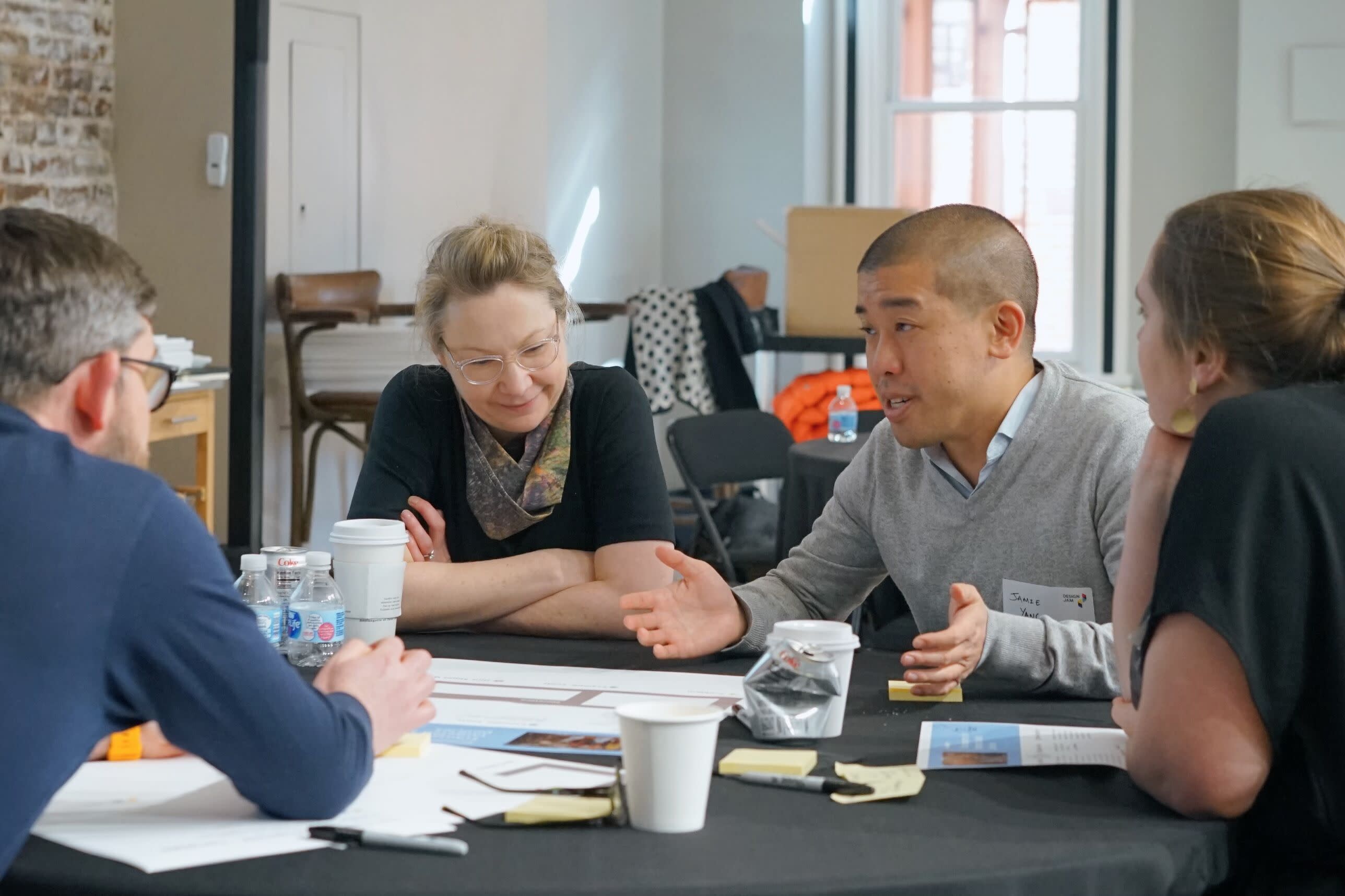Data for the Sustainable Development Goals (SDGs)
Data for gender equality and SDG5
6th Mar 2019 at National Union Building, Washington
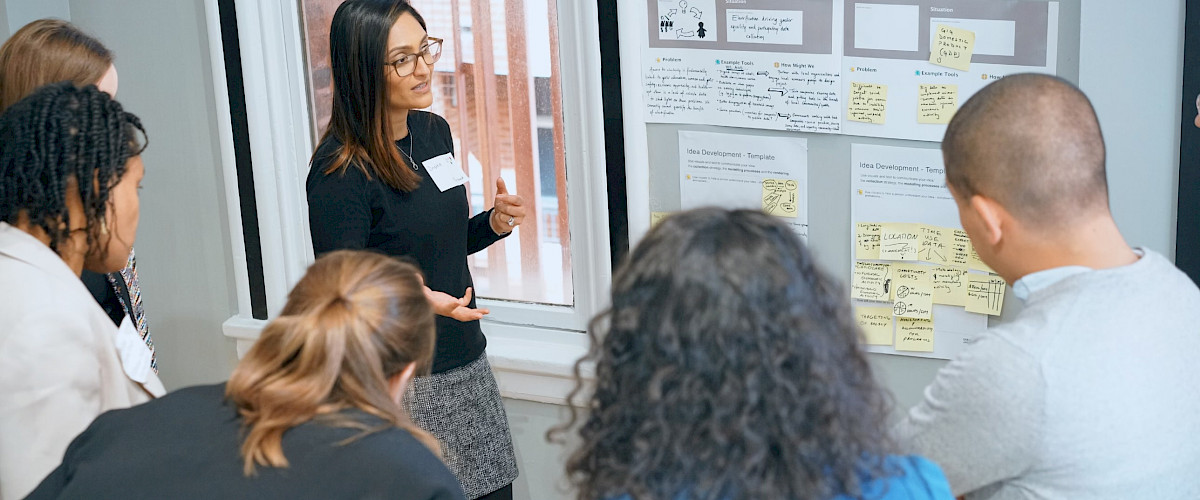
A critical barrier to advancing the UN's Sustainable Development Goals (SDGs) is the lack of data to inform decision making around programming, policy and investment, and monitor progress towards the goals. This includes data gaps, limited use of advanced analytics or other innovative data tools, and lack of local capacity to manage and analyze existing data.
A specific gap is the low availability of gender data, which is defined by technical and advocacy organization Data2x as data that is disaggregated by sex, such as primary school enrollment rates for girls and boys, as well as data that affects women and girls exclusively or primarily, such as maternal mortality rates.
Even in places that have significant commitment and political will to invest in women, there are few practical and economical ways to collect granular information specific to women and and to scale lessons on sustainable development.
Gender disaggregated data need to be collected, analyzed, and made openly available to unlock new opportunities for women and girls and to track progress toward the Sustainable Development Goals (SDGs). With the digital revolution comes an opportunity and a challenge to deliver a step-change in SDG5: Gender Equality.
To address data gaps and design high impact projects that increase the availability, understanding and use of data for sustainable development, specifically around gender equality.
Experts from a variety of disciplines attended the jam, including technology, policy and programmatic experts from multilateral organizations (the World Bank, UNICEF, USAID, MCC, and UN Women), non-profits (Plan International and IREX), and think tanks (Economist Intelligence Unit).
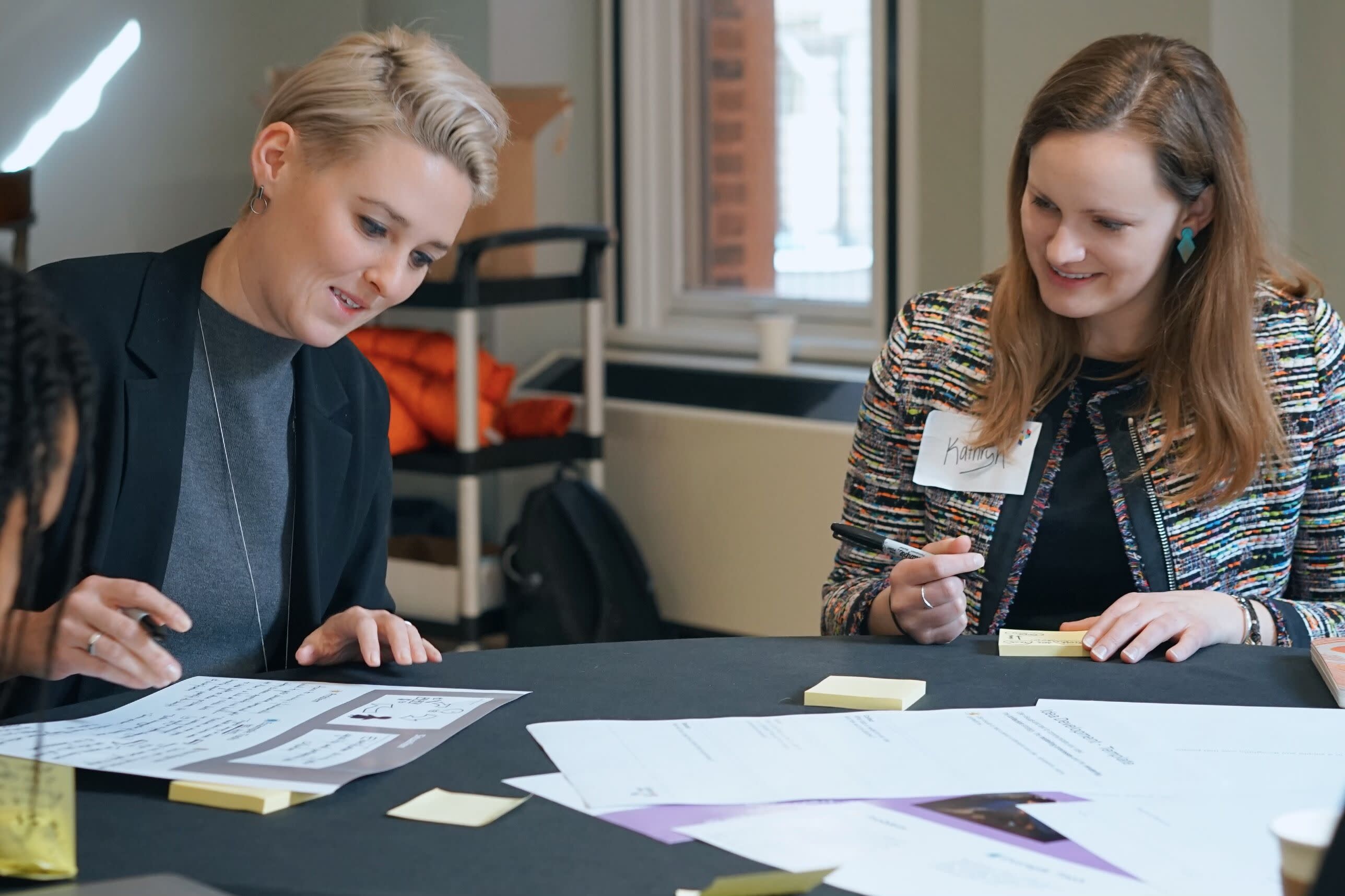
We adapted the TTC Labs toolkit to serve the specific needs of the data jam. In the morning, Chris Downs from TTC Labs partner Normally kicked off the facilitation. The group was welcomed by Marcy Scott Lynn who provided an overview of Facebook's mission-driven thinking.
Discover
Participants worked through three interactive exercises to Understand people involved in data collaborations and technology / non-profit partnerships; examine data products through data collection, modeling and rendering; and explore gender data gaps across SDG indicators.
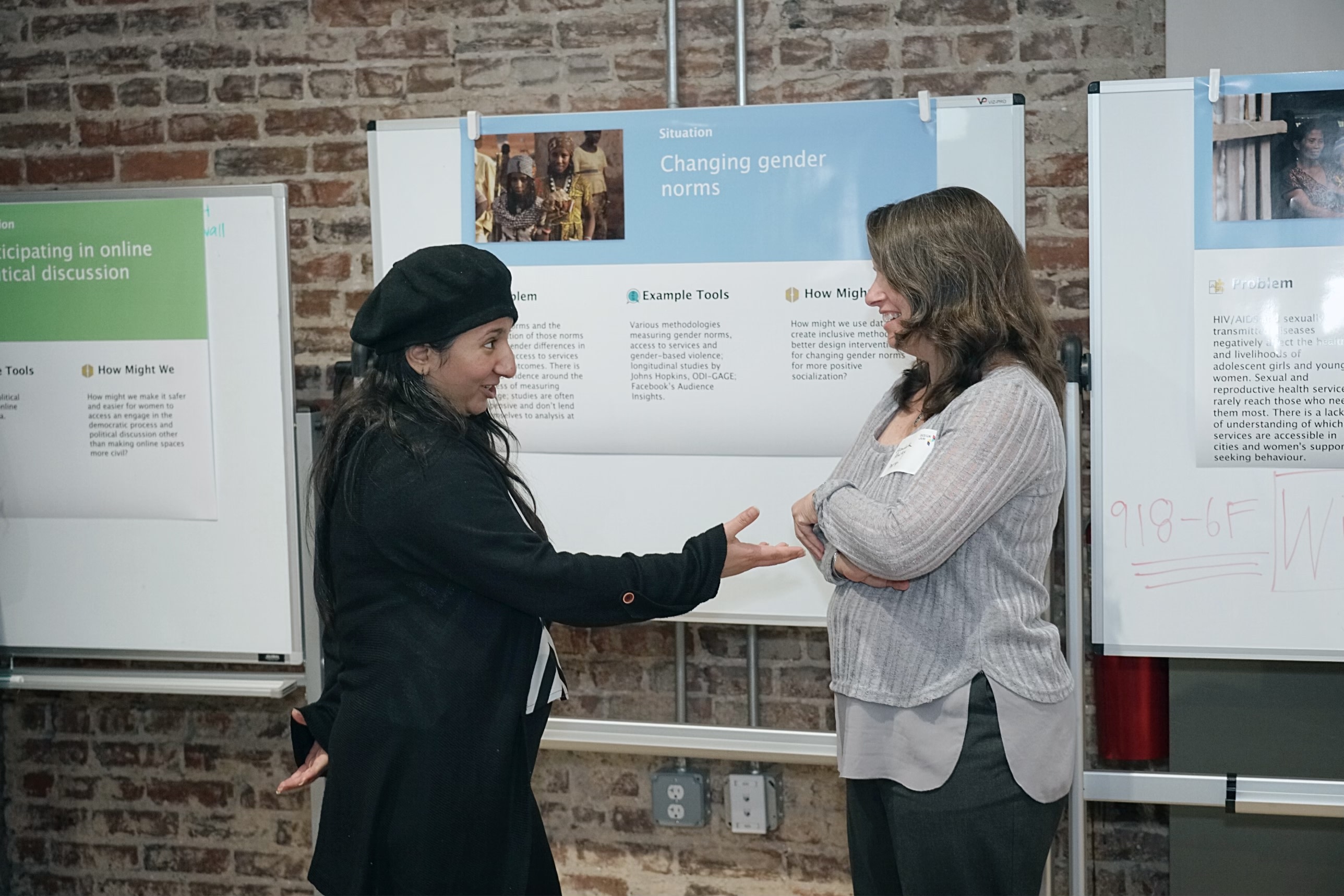
The group heard from subject matter experts who gave short lightning talks: Samhir Vasdev from the data-driven development organization IREX shared examples from their wide-ranging work around data and gender. Laura McGorman presented Facebook's insights on Data for Good including Population Density, Disaster Maps and the Future of Business. After lunch, participants were introduced to 14 use cases with gender data elements, which had been crowdsourced prior to the jam and aggregated across several thematic areas:
- Finance: enabling women-owned small businesses to benefit from industry choice, access to finance and better financial products
- Health: enabling greater access of sexual and reproductive health services through targeted campaigns for maternal health
- Disaster response: increasing equity in disaster response and crisis management
- Infrastructure: increasing equity in electrification and connectivity projects
- Behavioral norms: measuring gender norms and the gender digital divide
- Governance: understanding conversations on public safety, participating in political discussion and developing transparent social policies.
Ideate & Prototype
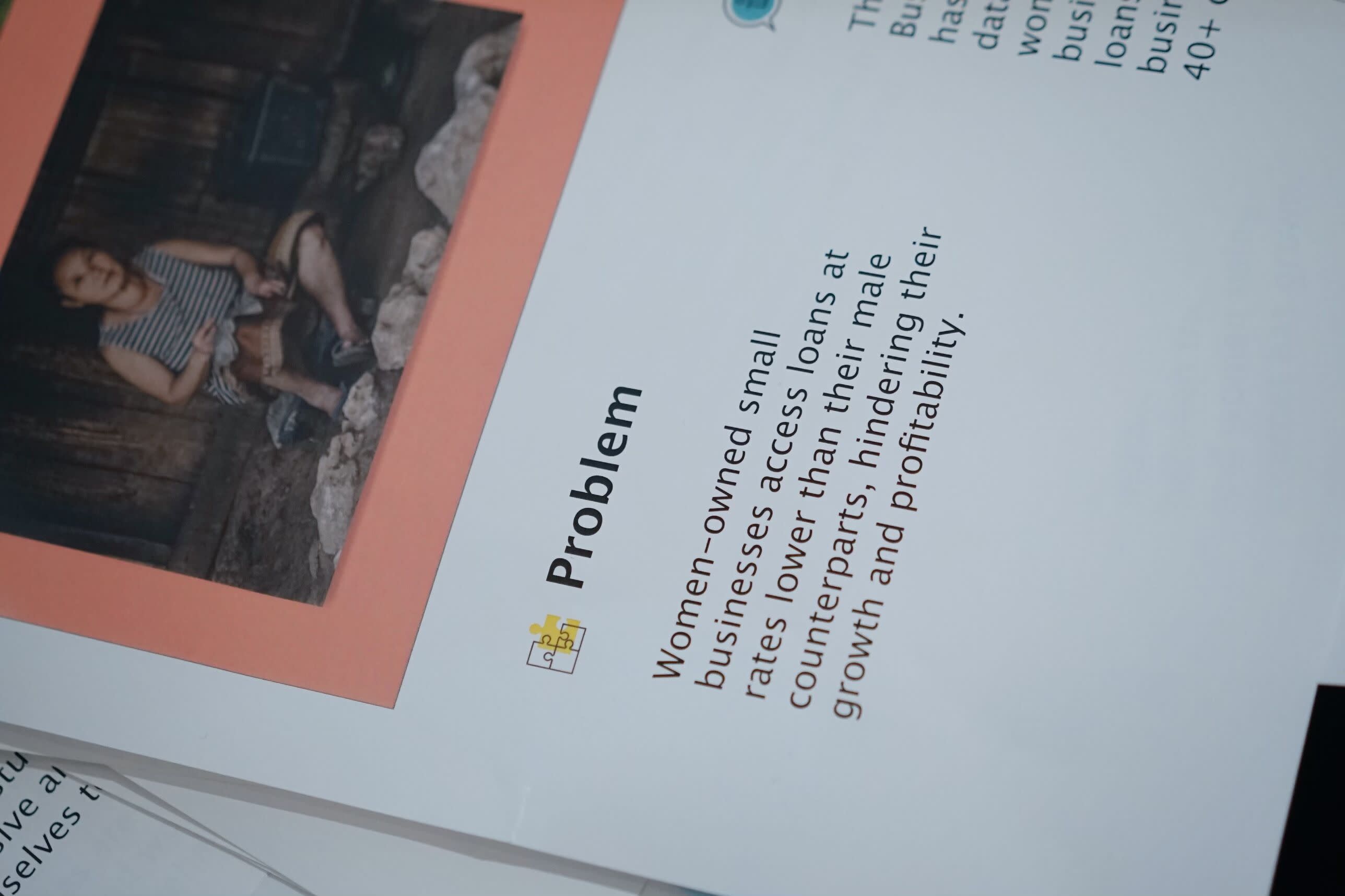
Participants form teams based on mutual interests. Teams then reframed and refined their understanding of the problem and opportunity space. Based on agile project plans, teams developed potential data collaborations, taking into account novel methods of gender-disaggregated data collection as well as stewardship (i.e. how to develop skills, capacity and best practices that maintain privacy and security, preventing bias or misuse/misrepresentation).
Teams were prompted to seek feedback from each other to simplify and scale their approach before presenting their projects to the whole group at the end of the day. Below are a series of hypothetical prototypes to address gaps in gender data for development. Each project overview includes the team's perspective on the underlying prioritized opportunities, the required tools, and the potential partners involved.
Access to entrepreneurship and information about sector profitability There is data on profitability by sector - how can it be put to use by relevant communities?
Tools & Opportunities
- Facebook's Future of Business survey could be modeled with national data by sector and gender to give a view into sector-level profitability. The hope is that this will help women better consider industry profitability when starting a business
- Infographics around women-led entrepreneurship in male-dominated sectors can be shaped by local contexts. Specifically, infographics can be targeted as Facebook adverts to survey participants and similar social groups to promote awareness about business opportunities in male-dominated sectors.
Partners & Stewardship
- Community and business groups, graphic designers, local, regional and national government.
- Develop best practices around converting online audiences into offline engagement for hard-to-reach populations.
Understanding the gender digital divide There is limited baseline information about gender-based gaps in access to the internet and mobile phones, leading to a duplication of efforts and ineffective and outdated program designs that could exacerbate the gender divide.
Tools & Opportunities
- Collect data from Facebook’s Audience Insights about location (e.g. rural/urban), device and connection type, and time spent for users by gender.
- Enable non-profits to detect trends over time and build a delivery platform to serve this need. Local insights can be used to drive engagement around and through local projects tackling the gender digital divide, placing insights in the hands of beneficiaries so they can drive change.
Partners & Stewardship
- Small business owners, rural communities, MCC, Mobile Network Operators, non-profits.
- Create digital public goods and principles, collaborating with the Global Partnership for Sustainable Development Data (GPSDD) and developing standards with the OECD’s Development Assistance Committee (DAC).
Measuring informal economic participation: “Gender Domestic Product” Social policies for women tend to be unspecified or deprioritized due to difficulties measuring informal, unpaid activity.
Tools & Opportunities
- Collect traditional household survey data on time use, expenditure and earnings together with mobile, online data about location and movement.
- Model formal and informal household and caregiving data in terms of daily hours spent (e.g. time on childcare).
- Create a methodology to quantify non-monetary activity to understand opportunity costs by gender.
Partners & Stewardship
- Multilaterals, non-profits, tech companies, national governments.
- Target policymakers to develop monitoring and accountability frameworks for programmatic interventions.
- Develop an incentive system, such as subsidies for beneficiaries around childcare and small business micro-loans, as well as opportunities for trusted partners.
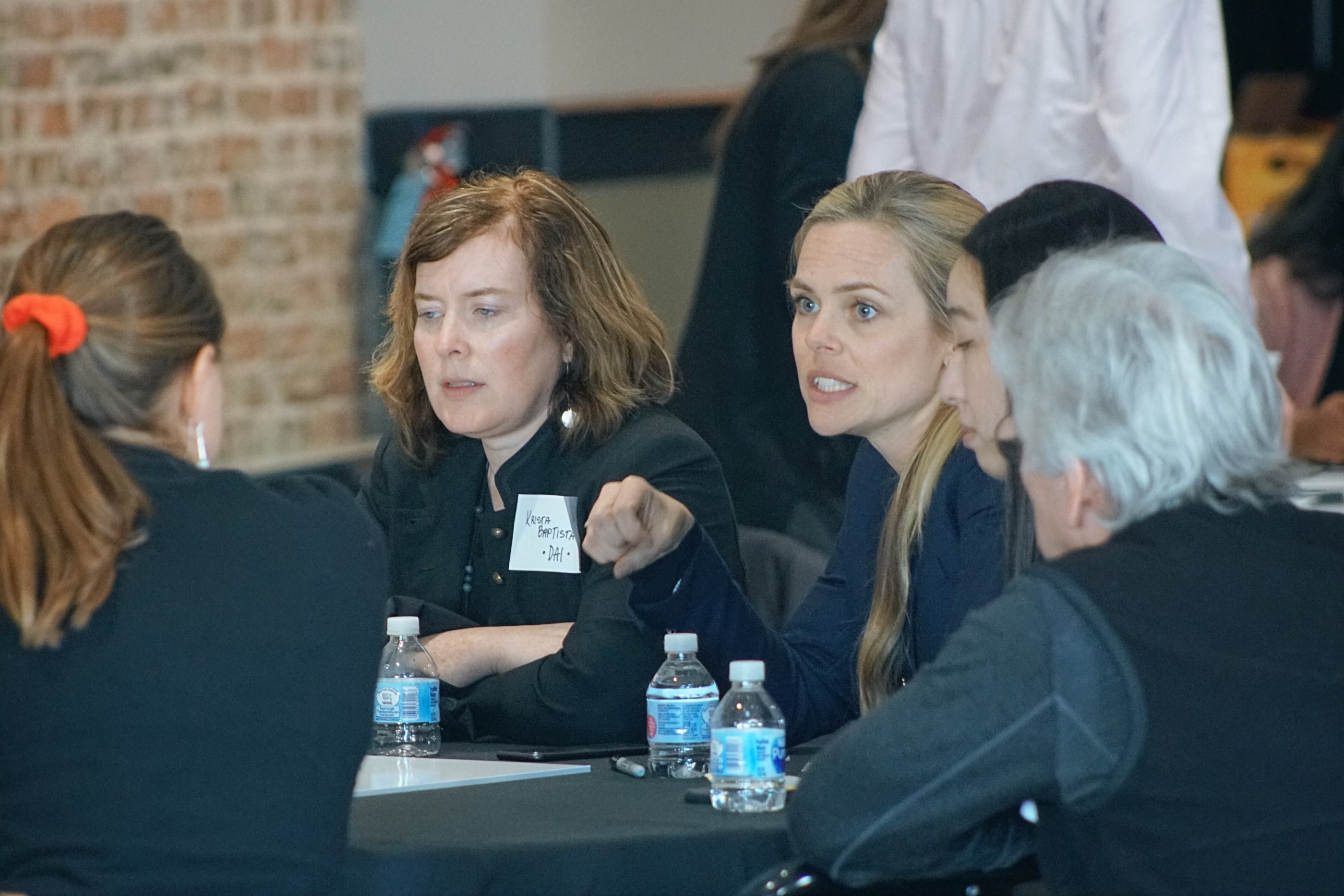
Tackling gender norms around women’s roles How do we use data to measure attitudes towards gender and the perception of norms around women’s roles in society?
Tools & Opportunities
- Collect online data from social media content analysis as well as both online and offline surveys.
- Use self-reporting from beneficiaries and from nonprofit payment processing systems (IATS).
- Conduct social network analysis (e.g. peer and network influencers).
- Merge data sources to map across sectors and conduct longitudinal and experimental analyses.
- Create a barometer with indices to track gender attitudes and perceptions around local issues.
Partners & Stewardship
- UNICEF, tech companies, national governments, academic experts.
- Develop best practices to measure gender perceptions, accounting for social desirability bias.
- Aim to increase low cost, high quality digital education in a prototypical city.
Electrification as a driver of gender equality and participatory data collection Access to electricity is fundamentally linked to girls and women’s education, safety, economic opportunity and health, yet there is a lack of reliable data to shed light on these problems. We currently cannot quantify the benefits of electrification.
Tools & Opportunities
- Understand gender data across community services (e.g. schools, clinics, religious institutions).
- Collect data around those connected to power, such as how and when electricity is used (e.g. at work/home).
- Use Facebook's Population Density Maps to increase insights.
- Gather perceptions around the benefits of electrification and if people think it helps them and their family/business.
- Conduct a comparative analysis across otherwise similar communities to examine the output and impact of electrification, building a model that will allow for the simulation of scenarios with other variables.
Partners & Stewardship
- Community service leaders, women’s groups, young people, energy providers and investors, local, national government, regulators, international Multilateral Development Banks, non-profits.
- Conduct a cost-benefit analysis that maps insights to socioeconomic return-on-investment, reducing risking for multi-stakeholder involvement.
- Empower women as service providers and consumers while being respectful of community culture and local nuances.
- Utilize an investment and work flow model to replicate across other infrastructural areas and sectors.
Women in public political discussion Women are less likely to participate in public political debate, online and offline.
Tools & Opportunities
- Understand off and online political participation rates by asking how much do women participate relative to men in different contexts? What contexts are women more likely to participate in? What’s the impact of different barriers to participation?
- Conduct qualitative interviews and surveys such as SMS-based anonymous polling and user experience tests.
- Address barriers to participation by developing apps to opt-in via SMS to moderated discussions online, with local and common discussion groups and threads.
Partners & Stewardship
- Social media, civic tech SMEs, government, non-profits.
- Aim to decrease violence towards women on platform and account for risks of partisanship to drive safe public representation.
What's Next?
This jam represented the first iteration of a series of workshop tailored towards the SDGs. Watch this space and get in touch if you’re interested in joining the conversation!
